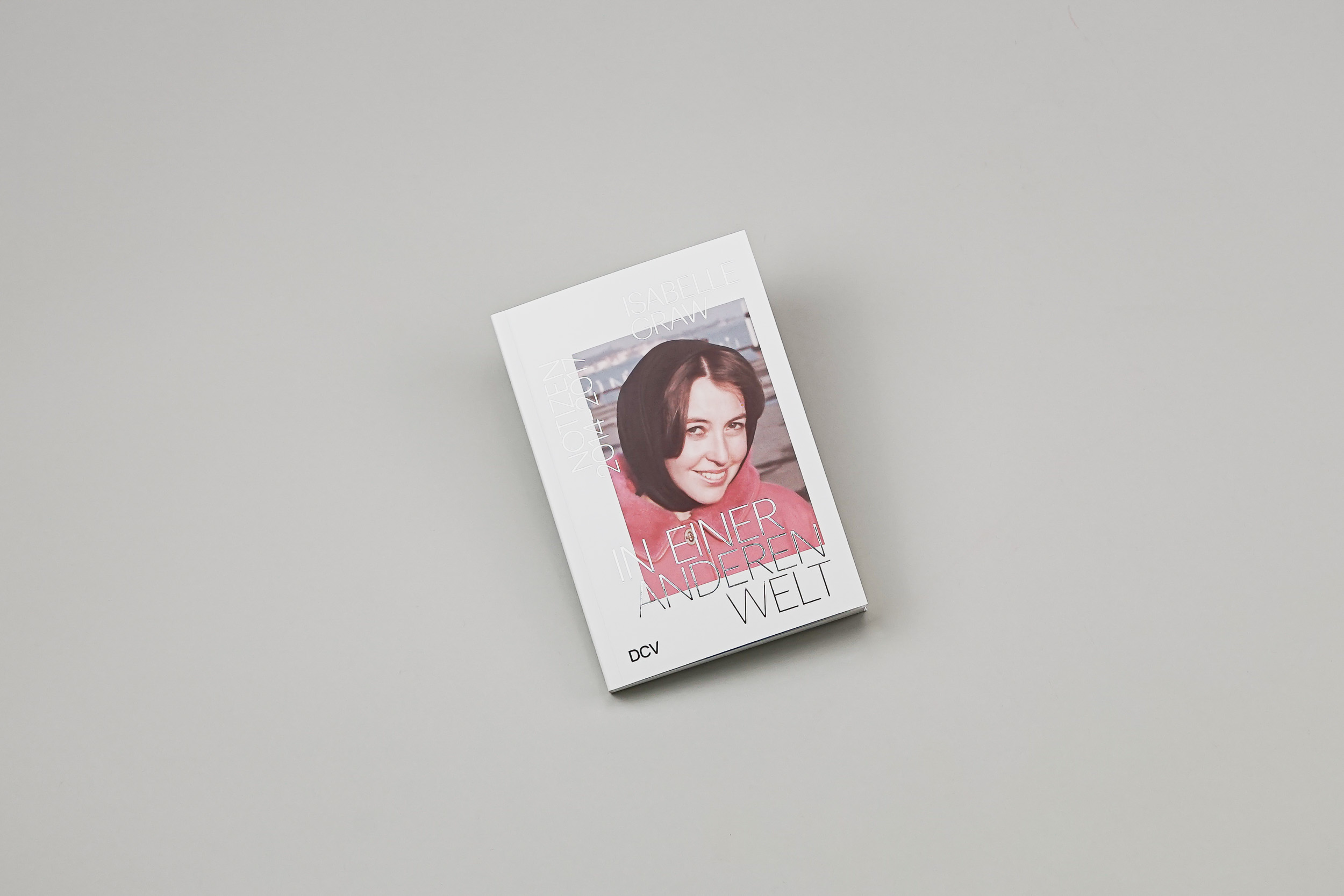
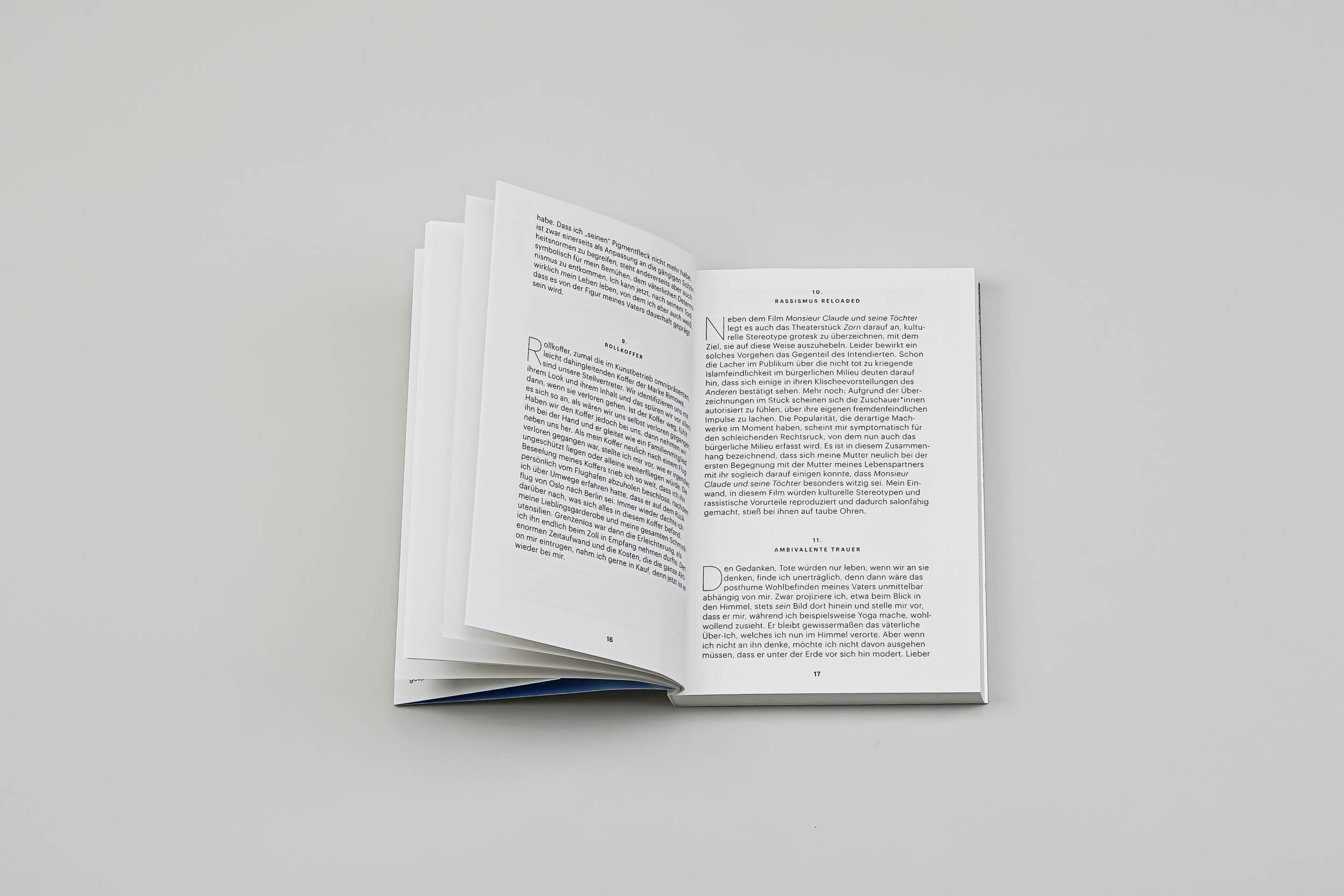
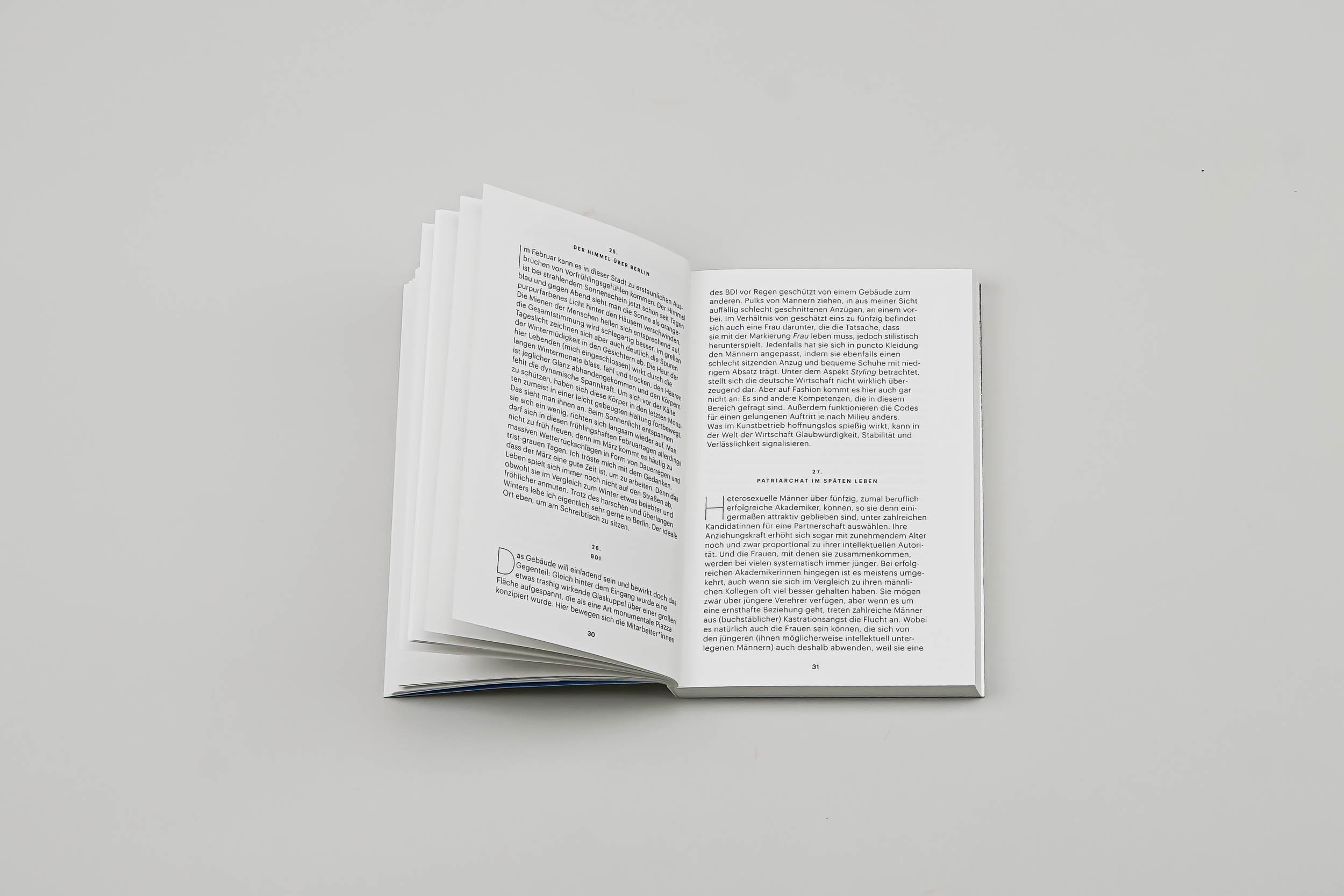
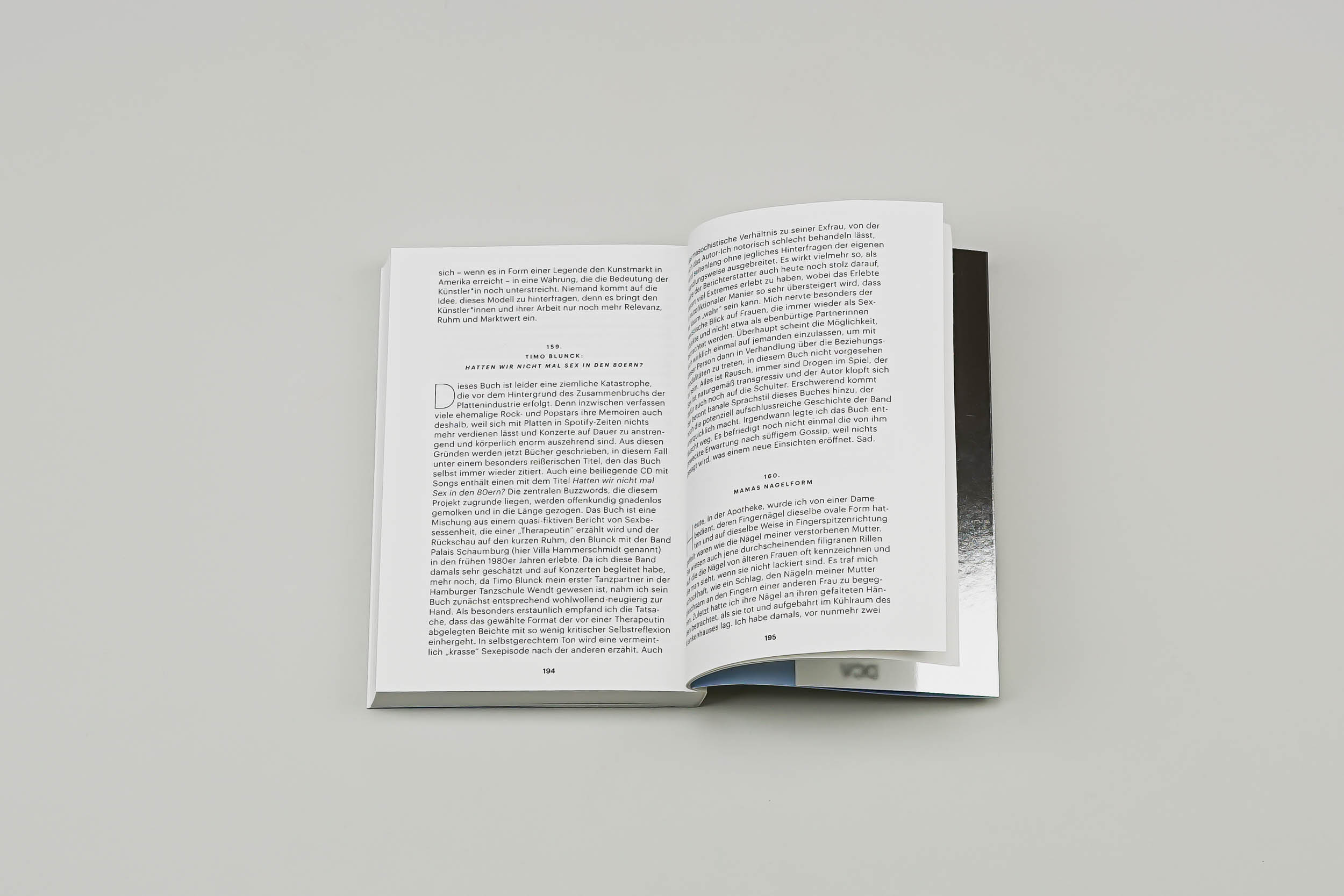
Isabelle Graw
In einer anderen Welt. Notizen 2014–2017
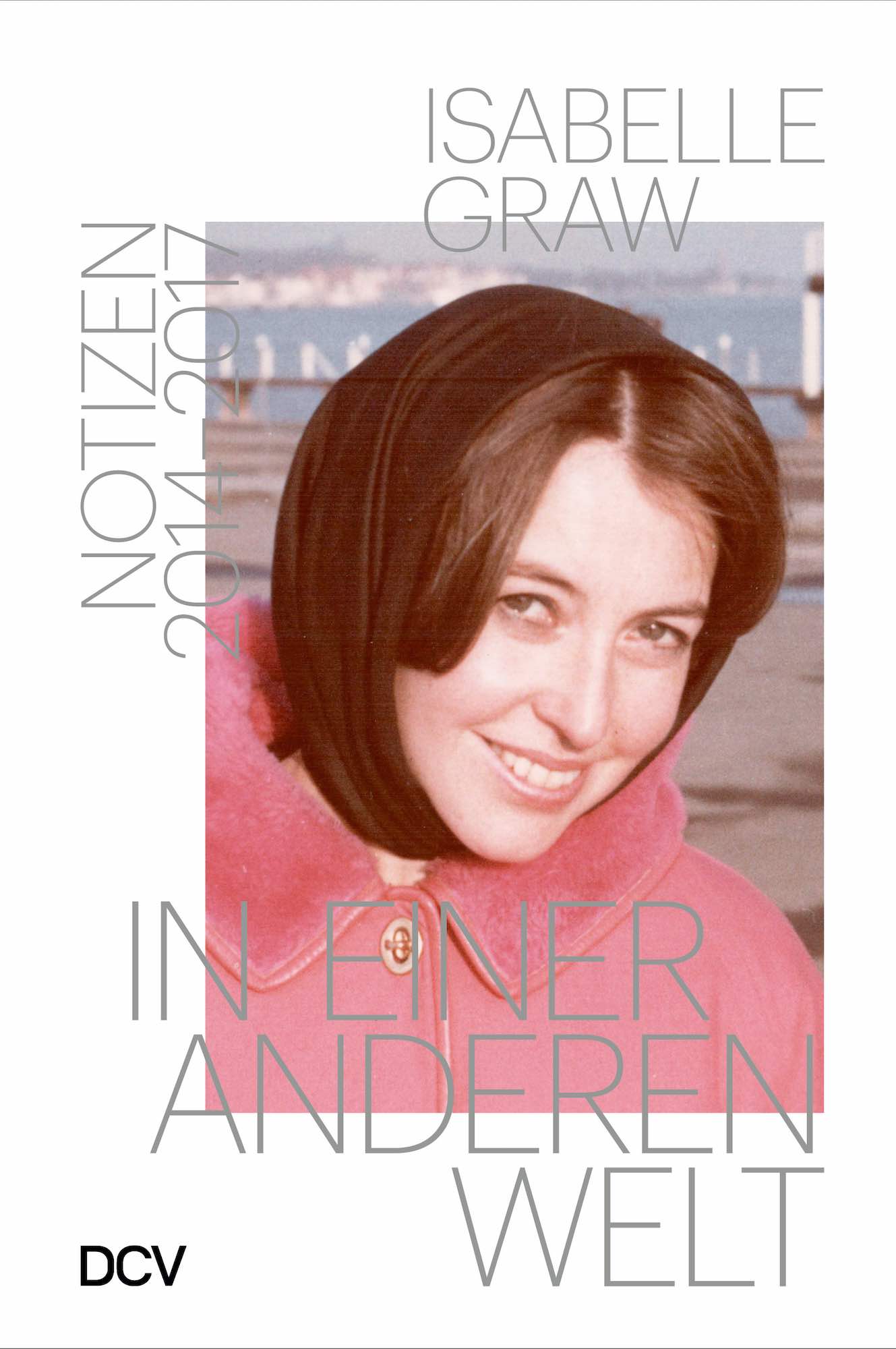 | |
|---|---|
| Author(s) | Isabelle Graw |
| Design | Markus Weisbeck, Surface Gesellschaft für Gestaltung |
| Size | 11 x 16 cm |
| Pages | 200 |
| Cover | Softcover |
| Language(s) | German |
| ISBN | 978-3-947563-87-6 |
Personal Observation as an Analytical Lens on Society
Isabelle Graw (b. 1962, Hamburg; lives in Berlin) is publisher of the magazine Texte zur Kunst and has been professor of art theory at the Staatliche Hochschule für bildende Künste – Städelschule in Frankfurt am Main since 2002. In this book, she branches out from her work as an art historian and critic to offer reflections on a wide range of observations from her own life. Never before has Graw addressed her readers more frankly than in these 160 notes.
“She is blindingly frank, addressing the questions that envelop her days: waxing salons, the arrival of Syrian refugees in Germany, exhibitions and grief, electoral and family politics. Subtly, Graw reveals how impressions and beliefs arise out of circumstance.”
Chris Kraus, American filmmaker and author of I Love Dick
“In crisp and striking vignettes, this book shows how self-scrutiny and minute observation of the world intermesh and form the dense web of her analysis. This is a unique and original book, literary, psychological and sociological, all at once.”
Eva Illouz, French-Israeli sociologist
Description
Isabelle Graw (b. 1962, Hamburg; lives in Berlin) is publisher of the magazine Texte zur Kunst and has been professor of art theory at the Staatliche Hochschule für bildende Künste – Städelschule in Frankfurt am Main since 2002. In this book, she branches out from her work as an art historian and critic to offer reflections on a wide range of observations from her own life. Never before has Graw addressed her readers more frankly than in these 160 notes.
“She is blindingly frank, addressing the questions that envelop her days: waxing salons, the arrival of Syrian refugees in Germany, exhibitions and grief, electoral and family politics. Subtly, Graw reveals how impressions and beliefs arise out of circumstance.”
Chris Kraus, American filmmaker and author of I Love Dick
“In crisp and striking vignettes, this book shows how self-scrutiny and minute observation of the world intermesh and form the dense web of her analysis. This is a unique and original book, literary, psychological and sociological, all at once.”
Eva Illouz, French-Israeli sociologist
„In klaren, markanten Vignetten zeigt. Isabelle Graw, wie Selbstprüfung und Beobachtungen ineinandergreifen und ein dichtes Netz der Analyse bilden. Dieses Buch. ist einzigartig und originell – literarisch, psychologisch und soziologisch zugleich.“
isabelle graw vom nutzen der freundschaft Hier ist seine Website und. link zu einem anderen buch isabelle graw die liebe zur malerei
Das zentrale Thema von. Heike Negenborn (geb. 1964 in Bad Neuenahr-Ahrweiler, lebt und arbeitet in Windesheim) ist der gesehene Lebensraum. In Anlehnung an die holländische Landschaftsmalerei des 17. Jahrhunderts stehen ihre Arbeiten in einer spezifischen Tradition der Wirklichkeitserfassung. Mit ihrer neuen Werkgruppe Net-Scape – Landschaft im Wandelüberführt Negenborn kunsthistorische Referenzen in zeitgenössische Darstellungen. Das Interesse der. Künstlerin gilt dabei fotomechanischen Transfermöglichkeiten, Medialität und der zunehmenden Vereinnahmung der analogen Wirklichkeit durch das digitale Bild.
Heike Negenborn studierte Freie Kunst am Austin College, Texas, Kunsterziehung an der Johannes Gutenberg-Universität Mainz sowie Malerei und Druckgrafik an der Akademie für Bildende Künste Mainz. Sebald veröffentlichte zwischen 1990 und 2001 vier fiktive. Geschichten, in denen er Schwarz-Weiß-Fotografien ohne weitere Angaben zu Herkunft und. Inhalt einfügte und die so den Text wie Erinnerungen begleiten. Pensive Images präsentiert 16. Künstlerinnen und Künstler, deren Arbeit im Stil von Sebald die Bereiche der Erinnerung und Geschichte durch Erfahrung und sich überschneidende. Zeitlichkeiten erforsche
Additional information
 | |
|---|---|
| Author(s) | Isabelle Graw |
| Design | Markus Weisbeck, Surface Gesellschaft für Gestaltung |
| Size | 11 x 16 cm |
| Pages | 200 |
| Cover | Softcover |
| Language(s) | German |
| ISBN | 978-3-947563-87-6 |






















